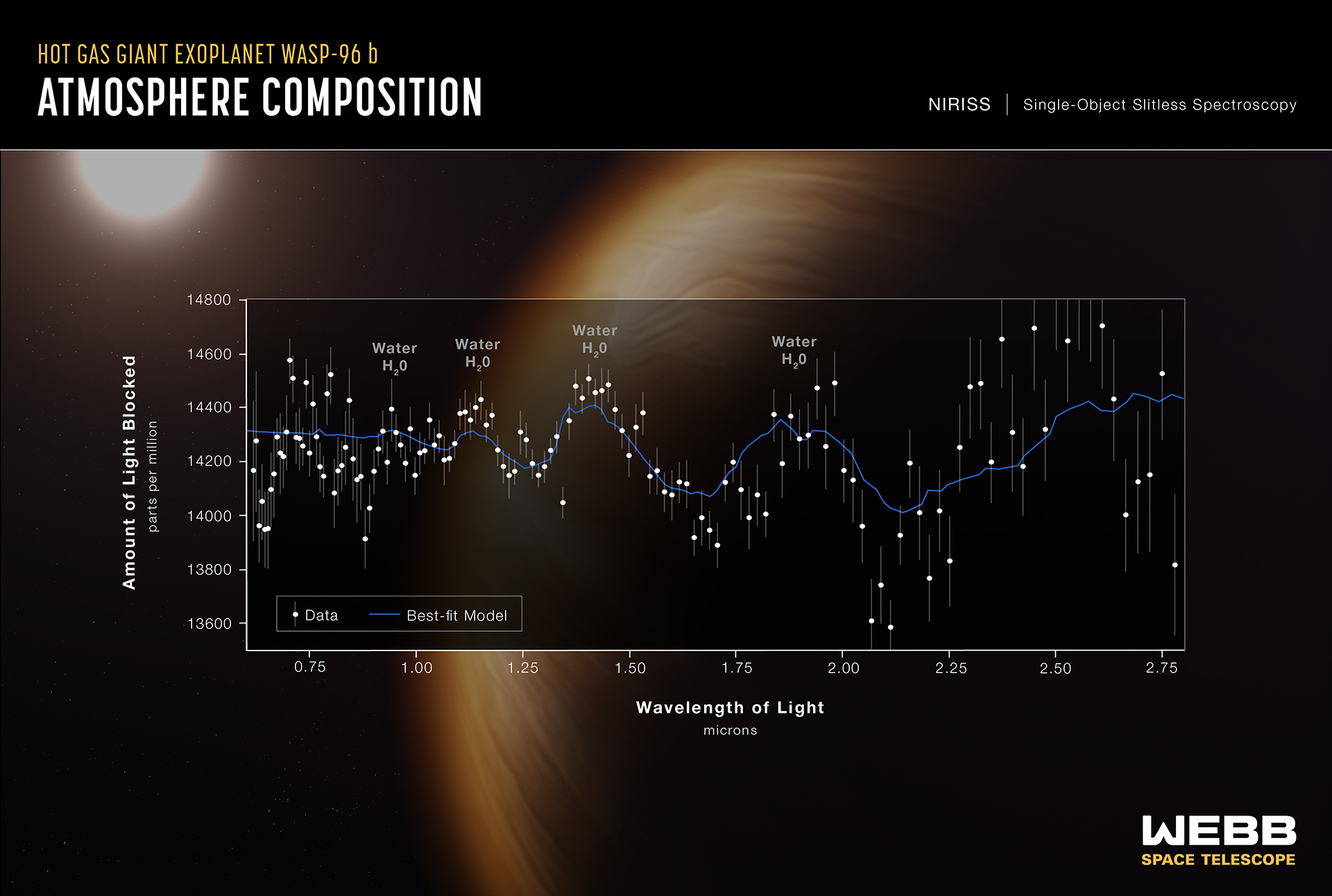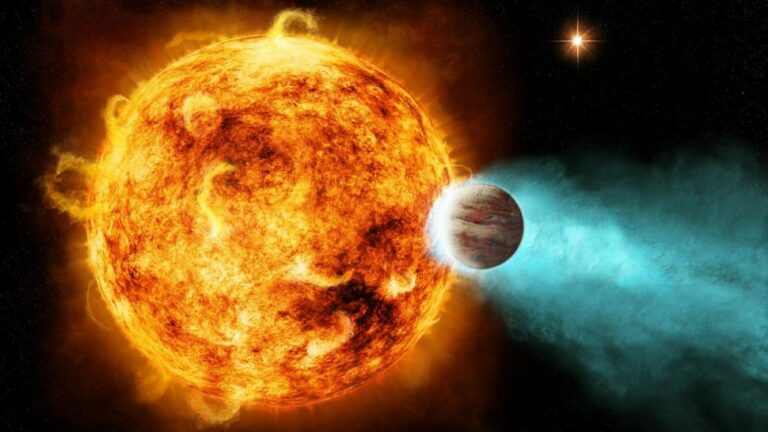JWST detects clouds on a ‘hot Jupiter’ that we thought had clear skies
It’s an early surprise, stemming from some of the first publicly released science data from the observatory.
The James Webb Space Telescope (JWST or Webb) is already confounding expectations with a surprising new discovery: It detected evidence for clouds on an exoplanet that was thought to have completely clear skies.
As part of the first set of science data from the James Webb Space Telescope, NASA released the transmission spectrum for WASP-96b, an exoplanet located 1,150 light-years away. WASP-96b is a “hot Jupiter” exoplanet, a gas giant that orbits extremely close to its star. (“WASP” stands for “Wide Angle Search for Planets,” which has used arrays of robotic cameras in the Canary Islands and South Africa to discover almost 200 exoplanets so far.)
The transmission spectrum reveals molecules in the planet’s atmosphere as it transits, or moves in front of its star from our perspective. As the star’s light is filtered through the planet’s atmosphere, molecules within the atmosphere absorb specific wavelengths of starlight, effectively blocking those wavelengths from reaching us. This creates dark absorption lines in the spectrum, a kind of molecular fingerprint describing the atmosphere’s chemical composition. In the first batch of images from Webb, the spectrum is reversed so that it more easily shows where the greatest amount of light has been blocked.
While observing in visual red and infrared light, Webb detected the absorption signature of water in WASP-96b’s atmosphere, as well as evidence for clouds and a hazy sky, NASA officials said in a statement. Clouds can obscure some of the spectral signatures of molecules radiating beneath them.
However, in 2018, the Very Large Telescope in Chile, operating in purely visual light, detected such a strong signature of sodium in the atmosphere that astronomers concluded that WASP-96b had no clouds at all. This finding has since been supported by recent observations by the Magellan Baade telescope at Las Campanas Observatory in Chile.

The contradictory results are proving to be a surprising puzzle for astronomers, who are reanalyzing both the Webb observations and the previous optical observations to better understand the behavior of WASP-96b’s atmosphere and the relationship between its molecular composition and its cloud levels.
Although we may not know for sure whether there are clouds on WASP-96b, we do know that there is no life as we know it on that planet. WASP-96b is a bloated gas giant that orbits so close to its star that it takes just 3.4 Earth days to complete one orbit, and it’s heated to over 1,800 degrees Fahrenheit (1,000 degrees Celsius). This heat causes the planet’s atmosphere to swell, such that WASP-96b is 1.2 times the diameter of Jupiter despite having only half its mass.
The findings show Webb’s immense power and sensitivity. While this is not the first detection of water in an exoplanet’s atmosphere — the Hubble Space Telescope was detecting water on exoplanets back in 2013 — previous detections took many observations. Webb’s Near-Infrared Imager and Slitless Spectrograph, by comparison, picked out the absorption lines belonging to water in just one 6.4-hour observation on June 21. The resulting transmission spectrum is, as you would expect from Webb, the most detailed such spectrum ever taken of an exoplanet.
Source:SpaceCom
Do not forget to share your opinion with us to provide you with the best posts !




0 Comments